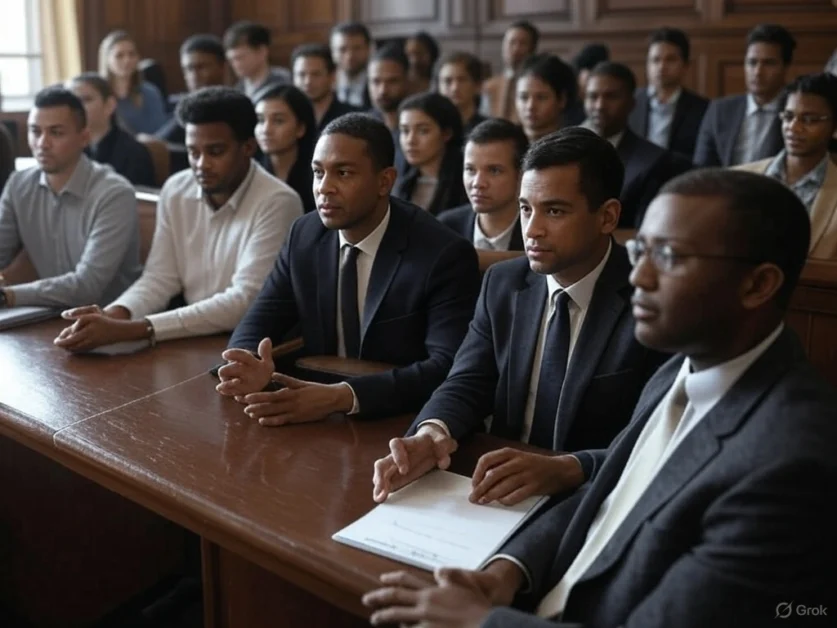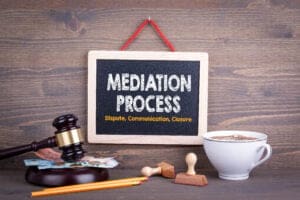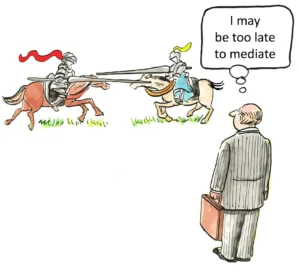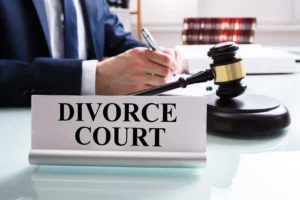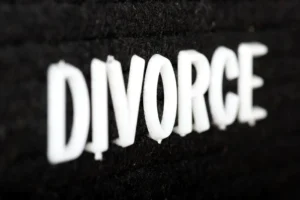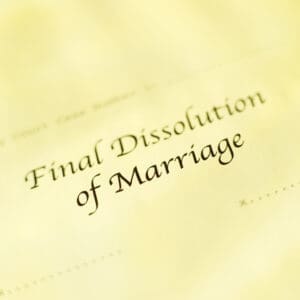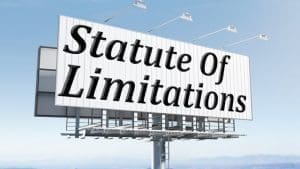What Legal Precedents Are Set by Controversies Over Educational Content?
The legal precedents established through controversies over educational content have profoundly shaped the constitutional landscape governing America’s schools. These judicial decisions define the delicate balance between competing interests: students’ rights to access information, parents’ authority over their children’s education, educators’ academic freedom, and the state’s responsibility to provide appropriate instruction. As these controversies continue to proliferate across the nation, understanding the foundational precedents becomes increasingly vital for attorneys, educators, and policymakers navigating this complex terrain.
Recent years have witnessed an unprecedented surge in challenges to educational materials, with book removals and curriculum disputes reaching levels unseen in decades. These controversies reflect deeper societal divisions about what values schools should impart and who should control educational content. The legal system’s response to these disputes establishes crucial precedents that determine the constitutional boundaries within which these conflicts must be resolved. These precedents not only address specific controversies but also articulate broader principles about the relationship between education and constitutional rights.
The significance of these legal precedents extends far beyond the particular books or lessons at issue in any given case. They establish the framework through which future disputes will be adjudicated, potentially affecting generations of students and educators. As the Supreme Court noted in Brown v. Board of Education, education serves as “the very foundation of good citizenship” and “a principal instrument in awakening the child to cultural values.” The precedents governing educational content thus shape not merely what students learn but also the fundamental values our educational system transmits to future citizens.
The Tinker Standard and Student Expression Rights
The foundation for many educational content disputes rests on Tinker v. Des Moines Independent Community School District, a landmark 1969 Supreme Court decision that established crucial protections for student expression. Though not directly addressing curricular materials, Tinker articulated the principle that students do not “shed their constitutional rights to freedom of speech or expression at the schoolhouse gate.” This declaration established that the First Amendment applies within educational settings, albeit with limitations appropriate to the school environment.
The Tinker standard permits schools to restrict student expression only when officials can reasonably forecast that the speech would “materially and substantially disrupt school operations” or infringe upon the rights of others. This “substantial disruption” test creates a presumption in favor of free expression, placing the burden on school authorities to justify restrictions rather than requiring students to prove their speech deserves protection. Importantly, the Court emphasized that mere discomfort with controversial viewpoints or “undifferentiated fear” of disturbance does not justify restricting student expression.
While Tinker primarily addressed student-initiated expression rather than curricular decisions, its principles have influenced subsequent cases involving educational content challenges. The decision established that constitutional protections extend into educational settings and that viewpoint discrimination—restricting expression simply because authorities disagree with the message—raises serious First Amendment concerns. These principles have shaped how courts evaluate challenges to educational materials, particularly when those challenges appear motivated by ideological objections rather than legitimate pedagogical concerns.
Board of Education v. Pico: Limiting Authority to Remove Library Books
The most significant precedent specifically addressing school library removal controversies emerged in Board of Education, Island Trees Union Free School District No. 26 v. Pico (1982). This case involved a school board’s decision to remove several books from school libraries, including works by Kurt Vonnegut and Langston Hughes, after board members characterized them as “anti-American, anti-Christian, anti-Semitic, and just plain filthy.” Student Steven Pico challenged this action as a violation of First Amendment rights.
In a closely divided decision, the Supreme Court ruled 5-4 in favor of the students, though without producing a majority opinion. Justice Brennan’s plurality opinion established that while school boards have significant discretion over curriculum, they cannot remove books from school libraries simply because they disagree with the ideas expressed in those books. The plurality distinguished between curricular decisions (where school authorities have greater discretion) and library access (where students’ right to receive information receives stronger protection). This distinction has proven crucial in subsequent litigation challenging book removals.
The Pico decision created an important limitation on school officials’ authority over library materials, establishing that books cannot be removed based on narrow partisan or political disagreements with their content. As Justice Brennan wrote, “Local school boards may not remove books from school library shelves simply because they dislike the ideas contained in those books.” This precedent provides significant protection against ideologically motivated book ban litigation, though its application remains contested due to the lack of a clear majority opinion and subsequent developments in First Amendment jurisprudence.
Hazelwood and School-Sponsored Expression
The Supreme Court significantly refined the boundaries of student expression rights in Hazelwood School District v. Kuhlmeier (1988), which addressed a principal’s decision to remove two pages from a student newspaper produced as part of a journalism class. The articles in question discussed divorce and teen pregnancy, topics the principal considered inappropriate for younger students. This case established important distinctions that have shaped subsequent educational content challenges.
The Court distinguished between personal student expression (governed by Tinker) and school-sponsored speech that might reasonably be perceived as bearing the school’s imprimatur. For the latter category, the Court held that educators may exercise greater control, allowing them to restrict student expression in school-sponsored activities “so long as their actions are reasonably related to legitimate pedagogical concerns.” This “legitimate pedagogical concerns” standard grants schools substantial discretion over curricular matters and school-sponsored activities.
The Hazelwood decision has significant implications for curriculum censorship cases, as it establishes that schools have considerable authority to control content that is part of the formal educational program. This precedent allows schools to make content-based decisions about curricular materials based on age-appropriateness, educational suitability, and consistency with the school’s educational mission. However, it also requires that such decisions be grounded in legitimate educational concerns rather than mere ideological preferences, creating a standard that continues to guide courts in evaluating curriculum challenges.
Parental Rights and Religious Objections to Curriculum
A separate line of precedents addresses parents’ rights to control their children’s education, particularly when curriculum conflicts with religious beliefs. In Wisconsin v. Yoder (1972), the Supreme Court held that Amish parents could exempt their children from compulsory high school attendance based on sincere religious objections. The Court balanced the state’s interest in universal education against the Free Exercise rights of the parents, finding that the state’s interest must yield when enforcement would endanger sincere religious beliefs.
However, lower courts have generally been reluctant to extend Yoder to grant parents broad opt-out rights from specific curricular content. In Mozert v. Hawkins County Board of Education (1987), the Sixth Circuit rejected parents’ claims that requiring students to read textbooks containing content contrary to their religious beliefs violated their Free Exercise rights. The court distinguished between exposure to ideas (which does not necessarily burden religious exercise) and compelled affirmation of belief (which might raise constitutional concerns).
More recently, the Supreme Court has agreed to hear Mahmoud v. Taylor, a case involving parents who sought to exempt their children from reading books featuring LGBTQ+ characters based on religious objections. This case, scheduled for the 2025 term, may establish significant new precedents regarding the balance between parental religious rights and schools’ authority to establish a common curriculum. The outcome could substantially impact how schools address religious objections to educational content, potentially creating new opt-out rights or reaffirming schools’ discretion to require participation in the standard curriculum.
State-Level Curriculum Control and Constitutional Limitations
State legislatures and education departments exercise primary authority over curriculum content, but this authority remains subject to constitutional constraints. Recent litigation has challenged state laws restricting discussions of race, gender, and sexual orientation in classrooms, testing the boundaries of state control over educational content. These cases establish emerging precedents about when state curricular mandates may violate constitutional protections.
In 2024, a federal court allowed a lawsuit challenging Florida’s Parental Rights in Education law (characterized by critics as “Don’t Say Gay”) to proceed, though the parties ultimately reached a settlement that clarified the law’s scope without resolving the underlying constitutional questions. The settlement permitted schools to maintain library books about LGBTQ+ characters and anti-bullying programs covering LGBTQ+ students, illustrating how litigation can shape the practical implementation of controversial curriculum laws even without definitive judicial rulings.
Similarly, federal courts have addressed Arizona’s prohibition on ethnic studies programs. The Ninth Circuit found that a section of the law prohibiting courses designed primarily for students of particular ethnic groups was facially overbroad and impermissible. A federal trial court subsequently held that other provisions of the law violated the First and 14th Amendments because state officials acted with impermissible racial animus when attempting to close a Mexican-American studies program. These decisions establish that while states have broad authority over curriculum, that authority cannot be exercised in a manner that violates constitutional protections against viewpoint discrimination or equal protection.
Academic Freedom and Teacher Expression Rights
The legal precedents governing educational content also address teachers’ academic freedom and expression rights. Courts have recognized that teachers retain certain First Amendment protections, though these rights are circumscribed by the school’s interest in controlling curriculum and ensuring appropriate educational content. The resulting precedents create a nuanced framework that balances teachers’ professional judgment against institutional authority.
In Pickering v. Board of Education (1968), the Supreme Court established that teachers, as public employees, have protected speech rights when addressing matters of public concern. However, subsequent decisions have clarified that when teachers speak pursuant to their official duties rather than as citizens, their speech may receive less protection. This distinction becomes particularly relevant in disputes over controversial curriculum content, where teachers may face discipline for deviating from prescribed materials or introducing contested topics.
Recent litigation has challenged restrictions on teaching about concepts related to race, gender, and sexuality. In March 2025, the National Education Association and American Civil Liberties Union filed a lawsuit challenging a Department of Education directive that allegedly restricted educators from teaching about race, diversity, equity, and inclusion. The lawsuit argues that the directive violates the First Amendment by prohibiting educators—particularly those in higher education—from teaching certain content, creating a chilling effect on academic freedom. The outcome of this litigation may establish important precedents regarding federal authority to restrict educational content and teachers’ rights to academic freedom.
Religious Content in Public Education
Controversies over religious content in public education have generated significant precedents defining the boundaries between permissible teaching about religion and unconstitutional religious indoctrination. These cases interpret the First Amendment’s Establishment Clause, which prohibits government endorsement of religion, and its Free Exercise Clause, which protects religious liberty. The resulting precedents create guidelines for how schools may address religious topics in curriculum.
In Epperson v. Arkansas (1968), the Supreme Court struck down a state law prohibiting the teaching of evolution in public schools, finding that it violated the Establishment Clause by advancing a particular religious viewpoint. Subsequent decisions in Edwards v. Aguillard (1987) and Kitzmiller v. Dover (2005) further established that teaching creationism or intelligent design as scientific alternatives to evolution unconstitutionally advances religious viewpoints in violation of the Establishment Clause. These precedents establish that curriculum decisions cannot be made primarily to advance religious perspectives.
However, courts have distinguished between teaching religious doctrines as truth (which violates the Establishment Clause) and teaching about religion in an objective, educational manner (which is constitutionally permissible). In Wood v. Arnold (2019), the Fourth Circuit upheld a world history curriculum that included study of Islamic religious beliefs, finding that the materials merely exposed students to the history and teachings of Islam rather than endorsing the religion. The court emphasized that “school authorities, not the courts, are charged with the responsibility of deciding what speech is appropriate in the classroom,” recognizing educators’ discretion to include objective study of religious traditions in curriculum.
Viewpoint Discrimination in Educational Content Decisions
A crucial principle emerging from educational content precedents concerns viewpoint discrimination—the impermissible practice of restricting expression based on the particular opinions or perspectives it conveys. While schools have legitimate authority to make content-based decisions for pedagogical reasons, decisions that discriminate against specific viewpoints raise serious constitutional concerns. This distinction shapes how courts evaluate challenges to curricular decisions and library materials.
In Pico, Justice Brennan’s plurality opinion emphasized that school boards could not remove books based on partisan or political disagreement with their content. This principle has been reinforced in subsequent cases, including the recent litigation challenging book removals in Escambia County, Florida. In January 2024, a federal judge rejected the school board’s motion to dismiss, finding that the plaintiffs had “plausibly alleged that Defendant’s removal/restrictions… do not pass constitutional muster… because the decisions were based on ‘ideological objections to [the books’] content or disagreement with their messages or themes, rather than for pedagogical reasons.'”
This distinction between legitimate pedagogical decisions and impermissible viewpoint discrimination creates a crucial limitation on school authorities’ discretion. While schools may make content-based decisions regarding age-appropriateness, educational value, and alignment with curriculum standards, they cannot target materials simply because they present disfavored perspectives on controversial issues. This precedent provides significant protection against ideologically motivated censorship while preserving schools’ authority to make legitimate educational judgments.
Standing to Challenge Educational Content Restrictions
An important procedural aspect of educational content precedents concerns who has legal standing to challenge restrictions. Recent cases have expanded standing beyond students to include authors, publishers, and advocacy organizations, creating broader opportunities to contest potentially unconstitutional restrictions. These standing determinations significantly impact the practical enforceability of First Amendment protections in educational settings.
In the Escambia County litigation, the court held that not only students and parents but also authors and publishers had standing to challenge the removal of books from school libraries. This determination recognized that book removals potentially harm multiple stakeholders: students lose access to information, while authors and publishers suffer both economic injury and infringement of their right to communicate with willing recipients. By recognizing these diverse interests, the court expanded the pool of potential plaintiffs who can contest educational censorship.
Similarly, advocacy organizations like PEN America and the National Education Association have successfully established standing to challenge restrictions on educational content. These organizational plaintiffs can often marshal greater resources for litigation than individual students or teachers, potentially increasing the effectiveness of legal challenges. The resulting precedents create multiple avenues for contesting potentially unconstitutional restrictions, enhancing the practical protection for First Amendment values in educational settings.
Emerging Precedents in Digital and Off-Campus Speech
As educational content increasingly exists in digital formats and student expression extends beyond school boundaries, courts have begun establishing precedents addressing these new contexts. These emerging precedents adapt traditional First Amendment principles to contemporary technological realities, creating frameworks for addressing novel questions about school authority over digital content and off-campus speech.
In Mahanoy Area School District v. B.L. (2021), the Supreme Court addressed a school’s authority to discipline a student for off-campus social media posts. The Court held that while schools may have legitimate interests in regulating some off-campus speech, their regulatory authority is more limited than for on-campus expression. This precedent has implications for educational content in digital contexts, suggesting that schools have less authority to restrict access to online materials outside school settings than to control materials within school libraries or curricula.
As schools increasingly utilize digital learning platforms, questions arise about filtering software, restricted access to online resources, and monitoring of student digital activities. While few definitive precedents have emerged in these areas, courts are likely to apply principles from existing cases—distinguishing between curricular requirements and library access, evaluating whether restrictions reflect legitimate pedagogical concerns or impermissible viewpoint discrimination, and considering the appropriate level of deference to educational authorities. These emerging precedents will shape how constitutional protections apply to digital educational content.
The Future of Educational Content Precedents
The legal landscape governing educational content continues to evolve, with several significant cases pending that may establish new precedents. The Supreme Court’s upcoming consideration of Mahmoud v. Taylor will address parental religious objections to curriculum, potentially reshaping the balance between parental rights and educational authority. Similarly, ongoing litigation challenging state restrictions on discussions of race, gender, and sexuality may establish important precedents regarding viewpoint discrimination in curriculum decisions.
These pending cases reflect broader societal debates about education’s purpose and who should control its content. As one legal scholar noted in the Stanford Law Review, the doctrine governing challenges to library book removals remains “inchoate and confusing,” with “little appellate guidance” for courts considering such cases. This doctrinal uncertainty creates both challenges and opportunities for attorneys navigating these disputes, as persuasive arguments about how existing precedents should apply to new contexts may significantly influence emerging case law.
The increasing politicization of educational content disputes may also influence how courts apply existing precedents. As controversies over books and curriculum become entangled with broader cultural conflicts, judges may face pressure to interpret precedents through ideological lenses. However, the fundamental principles established in cases like Tinker, Pico, and Hazelwood—protecting against viewpoint discrimination while recognizing legitimate pedagogical authority—provide enduring frameworks that transcend particular political moments.
Conclusion: Balancing Competing Values Through Legal Precedent
The legal precedents established through controversies over educational content reflect ongoing efforts to balance competing constitutional values: free expression, religious liberty, parental rights, and the state’s interest in effective education. These precedents recognize that while schools must have authority to make legitimate educational decisions, this authority cannot extend to ideological censorship or viewpoint discrimination. The resulting framework preserves both educational discretion and constitutional protection for diverse perspectives.
As new controversies emerge over books, curriculum, and digital content, these established precedents provide essential guidance while leaving room for adaptation to changing circumstances. The distinction between curricular decisions and library access established in Pico, the “legitimate pedagogical concerns” standard articulated in Hazelwood, and the protection against viewpoint discrimination recognized across multiple cases create a nuanced framework for resolving educational content disputes. This framework acknowledges both the importance of professional educational judgment and the danger of ideologically motivated censorship.
Ultimately, these legal precedents serve not merely to resolve specific disputes but to articulate fundamental principles about education’s role in a democratic society. As the Supreme Court noted in Keyishian v. Board of Regents, “The classroom is peculiarly the ‘marketplace of ideas.’ The Nation’s future depends upon leaders trained through wide exposure to that robust exchange of ideas which discovers truth ‘out of a multitude of tongues, [rather] than through any kind of authoritative selection.'” The precedents governing educational content controversies thus protect not only individual rights but also education’s essential function in preparing students for citizenship in a diverse democratic society.
Citations:
- San Diego Law Guide on Censorship
- Judicial Role in School Curricula
- Florida Court on School Library Books
- ACLU NEA Sue Over Educational Equity
- Stanford Review on Educational Censorship
- Supreme Court and Public School Issues
- Supreme Court Cases in Education
- Censoring Student Newspapers Overview
- Supreme Court on Book Banning
- Controversies Over Curriculum Decisions
- UC Guide on Education Law
- ACLU Complaint Against Education Department
- State Laws on Book Bans
- Importance of Understanding School Law
- Loyola Law Review on Curriculum
- Hazelwood v Kuhlmeier Case Study
- NEA ACLU Challenge Anti-DEI Letter
- ALA on Censorship Court Cases
- SCOTUS Cases on Free Speech
- Hazelwood v Kuhlmeier Podcast
- Your First Amendment Rights
- Legal Balance in School Curriculum
- Book Banning and Libraries
- Tinker v Des Moines Ruling
- School Legal Liabilities in 2024
- Book Bans Sweeping the U.S.
- UConn Guide on School Censorship
- Constitution vs Curriculum Issues
- Library Book Ban Supreme Court Case
- Supreme Court Decisions in Education
- PEN ACLU on Education Department Policies
- Academic Freedom and Supreme Court
- Key Education Law Developments 2022
- ALA Book Ban Data and Statistics
- Supreme Court Opinion on Education
- Stanford Forum on Curriculum Controversies
- PEN Report on Book Challenges
- America’s Censored Classrooms 2024
- Far-Right Attack on Education
- NYT on Book Ban Laws
- Top 10 Supreme Court Education Cases
- Supreme Court Impact on School Policies
- Online Education Law and Policy
- Educators’ Legal Literacy Guide
- U.S. Legal System and Education
- Educational Administration Legal Issues
- U.S. Department of Education Policies
- Constitution Center on Education Cases
- Librarians Resist Book Bans
- Supreme Court Key Rulings on Schools
- Education Department Ends Book Ban Claim
- Texas SB3 Curriculum Monitoring Testimony
